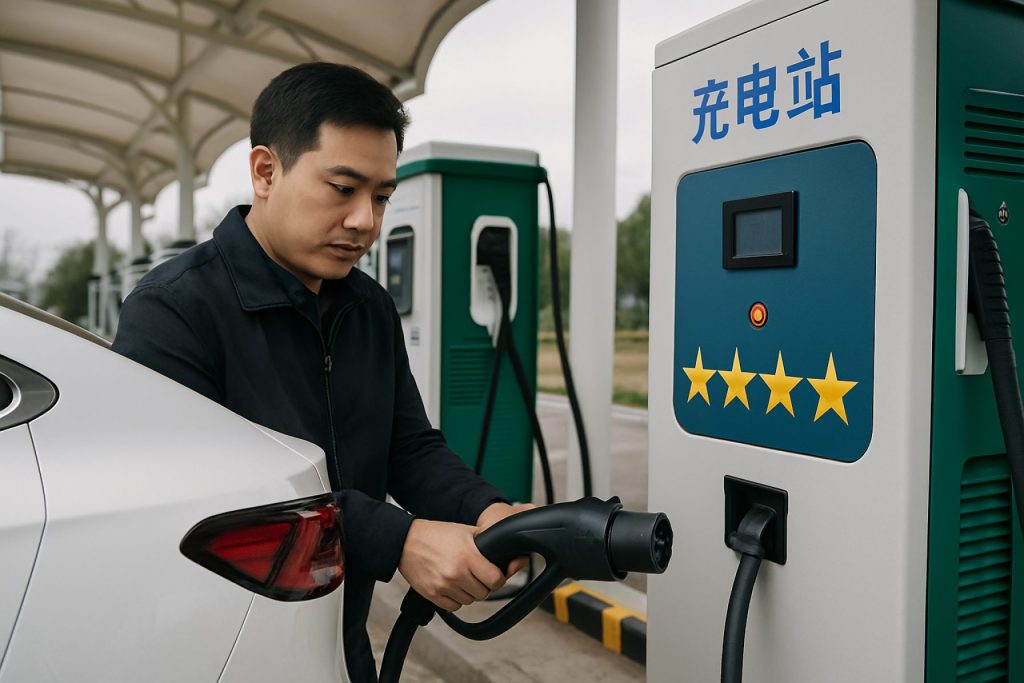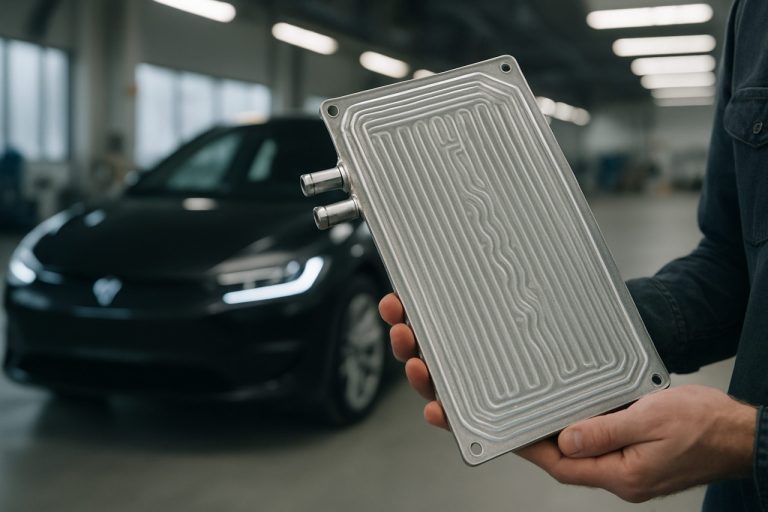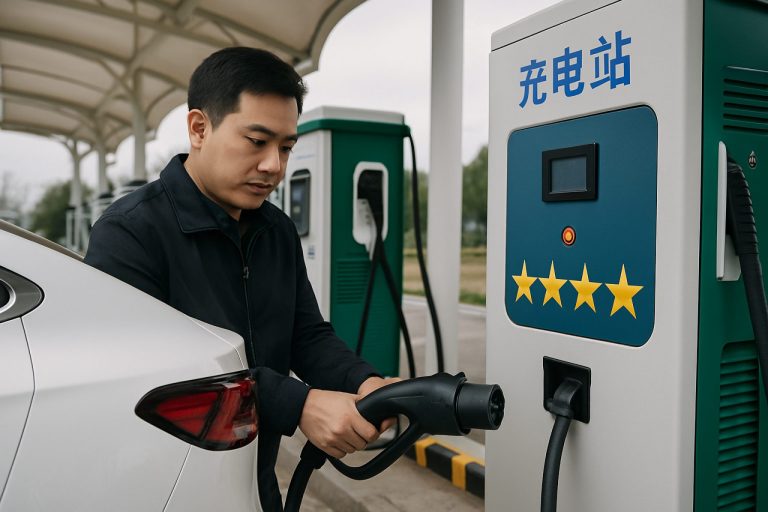
- China has launched a nationwide star-rating system for public electric vehicle (EV) charging stations, improving quality and transparency for users.
- The star ratings are based on metrics like facility completeness, service capability, safety, and low-carbon impact.
- Stations with higher ratings offer better maintenance, user experience, and environmental benefits, boosting consumer trust and industry innovation.
- Only operational public charging stations are evaluated, ensuring standardization and oversight in rapidly expanding EV infrastructure.
- This initiative is making EV charging in China more reliable and convenient, setting new benchmarks for safety, sustainability, and user experience in urban mobility.
Beneath the fluorescent glow of city skylines and along the veins of China’s bustling highways, a quiet revolution is unfolding. The electric vehicle era hums audibly now, no longer a distant promise but a daily reality—one further anchored by a bold new initiative: a nationwide star-rating system for public EV charging stations.
No longer is charging your electric ride a simple stop at a random plug. Suddenly, charging stations compete for prestige, and drivers gain clarity, convenience, and a promise of safety. Spearheaded by the China Electric Vehicle Charging Infrastructure Promotion Alliance—one of the most trusted bodies driving EV infrastructure quality—and backed by the minds at the China Automotive Technology and Research Center, the new rating program marks a profound shift from basic infrastructure to high-quality benchmarks.
A Race for Excellence Lights Up the Grid
This ambitious campaign doesn’t simply award gold stars willy-nilly. Instead, it rigorously sorts charging hubs with laser-focused metrics: facility completeness, service capability, and, crucially in an age of climate awareness, green, low-carbon impact. Inspectors scrutinize operations for efficiency, seamless usability, advanced safety, and environmentally conscious operation.
Here’s how it works: Charging stations scoring over 90 points snatch a coveted five-star badge; those between 80 and 89 points win four stars, and so on, right down to a single unimpressive star for facilities scoring below 60. Such visible rankings will not only steer consumer trust but ignite an industry-wide drive to innovate, upgrade, and showcase excellence. As of this spring, 189 public stations already wear their stars with pride, illuminating the landscape for millions of EV drivers.
Standardization: Powering Trust, Not Just Cars
With rapid EV adoption turning parking lots and roadside shoulders into potential charging destinations, the importance of standardization and oversight cannot be overstated. These new industry guidelines—officially locked in just weeks ago—are tailored for operational public stations; private garages and yet-to-open hubs will have to wait their turn. For the consumer, this translates into fewer worries about neglected plugs, shoddy maintenance, or opaque pricing. For enterprises, it’s an invitation—a challenge—to build smarter, greener, and more user-centric charging worlds.
The Road Ahead: More Than Just a Plugin
As China races to solidify its leadership in electric mobility, this star system signals a future where charging your car is as comfortable and trustworthy as filling your tank once was. Expect charging hubs to get smarter, faster, and much friendlier—transforming mundane waiting time into a seamless urban experience or a sustainable pit stop.
Takeaway: The way you power an electric vehicle in China is evolving. As the country bestows stars on its charging stations, drivers receive not just energy, but a new assurance of quality, safety, and convenience. Expect the global auto industry to take note—and perhaps, follow suit.
The Hidden Truths Behind China’s Star-Rated EV Charging Stations: What Drivers and Industry Insiders Must Know in 2024!
China’s Bold Star-Rating System for EV Charging: A Game-Changer
China’s electrification journey has just taken a quantum leap with the introduction of a nationwide star-rating system for public EV charging stations. While the source article highlights the surface benefits, there is far more happening beneath the hood—reshaping not just infrastructure, but also consumer experience, regulatory oversight, and the global electric vehicle (EV) industry landscape.
Additional Facts & Insights Not Covered in the Source
1. How the Star System Transforms Consumer Behavior
– Transparency and Confidence: The highly visible star ratings empower customers to make informed choices, similar to how hotel or restaurant stars work for travelers. Studies (see [IEA 2023 EV Outlook](https://www.iea.org/)) confirm that transparent quality markers accelerate consumer adoption and satisfaction.
– Reduced “Range Anxiety”: Standardized, high-quality stations with ratings ease fears about finding reliable chargers—one of the key barriers to EV adoption.
2. How-To: Choosing the Best Charging Facility
1. Check Ratings—Always look for the station’s star badge before plugging in.
2. Inspect the Station—Higher-rated stations often feature better amenities, cleaner facilities, and faster charging options.
3. Use Official Apps—Platforms like “State Grid EV Service” offer real-time data on station status and ratings.
3. Life Hacks for EV Drivers in China
– Peak vs Off-Peak Charging: Higher-rated stations often display pricing transparency, so savvy drivers can plan cheaper top-ups during off-peak hours.
– Stay Productive: Many five-star hubs now integrate lounges, Wi-Fi, and even retail, turning charging time into work or leisure time.
– Download Multiple Apps: Not all stations use the same platforms—using several increases your access range and information accuracy.
4. Industry Trends & Market Forecasts
– Global Influence: China—home to over 50% of the world’s public EV chargers ([IEA](https://www.iea.org/))—is setting a precedent that EU and North American regulators are closely watching and discussing replicating by 2025.
– Growth Potential: The Chinese public charging market is forecasted to grow at a 27% CAGR through 2030, with ultra-fast charging and renewable energy integration dominating future investments.
– Tech Innovation: Look for AI-powered predictive maintenance and solar-powered charging stations by 2026.
5. Controversies & Limitations
– Grading Accuracy: Some local governments have faced criticism over rating consistency due to regional disparities in evaluation standards.
– Private Chargers Excluded: The system currently omits private and residential chargers, which represent a significant portion of China’s charging landscape.
– Accessibility Gaps: Western and rural regions lag behind major coastal cities in five-star station availability.
6. Specifications, Features & Pricing
– Tiered Charging Speeds: Five-star stations typically offer ultra-fast DC charging (up to 350kW), supporting rapid top-ups in under 20 minutes.
– Smart Features: Contactless payment, QR-code access, and dynamic pricing are standard at higher-rated stations.
– Safety Upgrades: Enhanced fire suppression systems and real-time fault monitoring at top-tier hubs.
– Price Range: Standard AC charging can cost ¥1.2-¥1.8/kWh; fast DC stations may charge ¥2.0-¥3.5/kWh, depending on region and star rating.
7. Security & Sustainability
– Data Protection: New stations are integrating advanced cybersecurity measures to prevent hacking of payment and control systems.
– Green Energy Sourcing: Stars are partly awarded for integrating renewable sources; some five-star hubs claim up to 50% of their power from solar or wind.
8. Real-World Use Cases
– City Fleet Upgrades: Municipalities like Shenzhen operate only in four- and five-star stations for their city buses and taxis, ensuring reliability and safety.
– Commercial Corridors: Interstate “super-charging corridors” boost logistics companies using heavy-duty EV trucks by grading and mapping high-quality hubs along major highways.
– Tourism: Eco-friendly scenic spots now promote their green charging stations in promotional materials, attracting sustainable tourism.
9. Comparisons: China vs. Global Charging Standards
– China’s rating system is far more comprehensive than the U.S. Department of Energy’s locator, which doesn’t evaluate quality—only presence.
– European “AFIR” measures (coming into force in 2025) may adopt star-like consumer transparency features, but currently lag behind China’s scope.
10. Pros & Cons Overview
| Pros | Cons |
|————————————————|———————————————-|
| Transparency inspires consumer confidence | Currently excludes private home charging |
| Accelerates standardization and tech upgrades | Evaluation consistency can vary regionally |
| Spurs industry competition and innovation | Rural areas see fewer high-rated stations |
| Promotes green energy integration | Focused on operational, not upcoming, sites |
11. Key Reader Questions Answered
Q: Will the star system affect charging costs?
A: Not directly, but higher-rated (five-star) stations may justify higher prices due to better services and speed. Dynamic pricing means costs fluctuate—plan ahead.
Q: Will EV drivers from abroad recognize these ratings?
A: International drivers may need to familiarize themselves; signage and QR codes are generally bilingual in major cities.
Q: Are new energy vehicles (NEVs) other than passenger cars covered?
A: Yes, the star system applies to stations serving all public EVs, including buses, commercial trucks, and ride-hailing vehicles.
Q: How often are stations reassessed?
A: Annual inspections are required, with spot checks for complaints or safety violations.
Q: How can charging station owners improve their star rating?
A: By investing in infrastructure upgrades, adopting green energy, training staff, and providing value-added services such as rest areas or retail options.
—
Actionable Recommendations & Quick Tips
– Always choose stations with the highest star ratings for faster, safer, and greener charging.
– Combine route planning with star-rated station locations using trusted apps or platforms.
– For fleet operators, prioritize contracts with four- or five-star stations to minimize downtime and maximize vehicle utilization.
– Regularly update your charging app to ensure access to new ratings and locations.
– Subscribe to newsletters from the China EV Charging Alliance to follow updates and new policy rollouts.
—
In Conclusion:
China’s star-rated EV charging system is revolutionizing driver expectations and industry performance—bringing transparency, safety, and sustainability to the forefront. Whether you’re a daily commuter, fleet manager, or policy observer, keeping an eye on these developments can offer a roadmap to best practices and new opportunities in the evolving electric vehicle era.



